- Wondering how to get Monopoly GO! free rolls? Well, you’ve come to the right place. In this guide, we provide you with a bunch of tips and tricks to get some free rolls for the hit new mobile game. We’ll …
Best Roblox Horror Games to Play Right Now – Updated Weekly
By Adele Wilson
Our Best Roblox Horror Games guide features the scariest and most creative experiences to play right now on the platform!The BEST Roblox Games of The Week – Games You Need To Play!
By Sho Roberts
Our feature shares our pick for the Best Roblox Games of the week! With our feature, we guarantee you'll find something new to play!All Grades in Type Soul – Each Race Explained
By Adele Wilson
Our All Grades in Type Soul guide lists every grade in the game for all races, including how to increase your grade quickly!
The Clockwork Man – Steampunk goes casual
Total Eclipse CEO and game designer Argiris Bendilas takes us behind the scenes of The Clockwork Man and its sequel, The Clockwork Man: The Hidden World, explaining the inspiration behind the steampunk setting, how the company developed the unique new scrollable and zoomable scenes, and why they decided to release the games DRM-free in this developer diary post mortem.
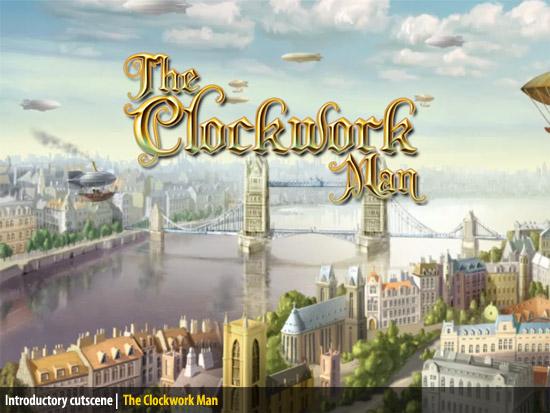
Total Eclipse CEO and game designer Argiris Bendilas takes us behind the scenes of The Clockwork Man and its sequel, The Clockwork Man: The Hidden World, explaining the inspiration behind the steampunk setting, how the company developed the unique new scrollable and zoomable scenes, and why they decided to release the games DRM-free in this developer diary post mortem.
The birth of The Clockwork Man World
Think London, England, turn of the 19th century. You are walking down glistening wet streets dressed in your best Sunday dress (or gentlemen’s suit). Something momentarily blocks the sun; you glance up and see a commercial zeppelin flying above, probably bound for Heathrow. The world of the Clockwork Man is much like our own, and yet not. It is filled with wonders of Steampunk fiction, where the ingenuity of the industrial revolution blends with futuristic steam-powered machines. An amalgam of anachronistic technology, Victorian values, fashion and décor makes up this familiar and yet fictitious world that had never been attempted in a casual game before. Back in 2008, creating something like this was quite a challenge (and risk) for us in Total Eclipse.
How could we make such a place believable and inviting? To familiarize ourselves with this intriguing era, we researched numerous sources from Jules Verne’s works to websites of Victorian antiques. Robert, our writer, is a huge Steampunk fan and his enthusiasm fueled our vision for something grand. Thus we began designing the first Clockwork Man.

It’s hidden object, but not as you know it.
Story and setting alone are not enough to make a game stand out; gameplay comes first. We focused on taking the hidden object genre to new levels, by “introducing a twist.”
We looked at hidden object games of the time and realized that they shared a common characteristic; you were always looking for objects in a static area. We came up with the idea of introducing multiple layers in each scene, essentially giving it more depth.
This was the birth of zoomable and scrolling scenes, two terms that we coined just for the occasion. Zoomable scenes usually consist of two levels; the zoomed out and the zoomed in one. The player can seamlessly move between the two, feeling as if she’s moving forward or backwards in an area.
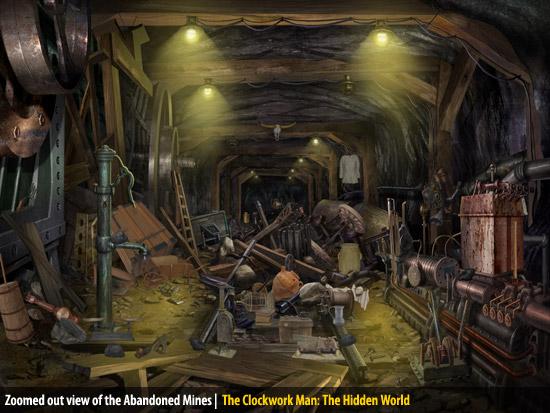
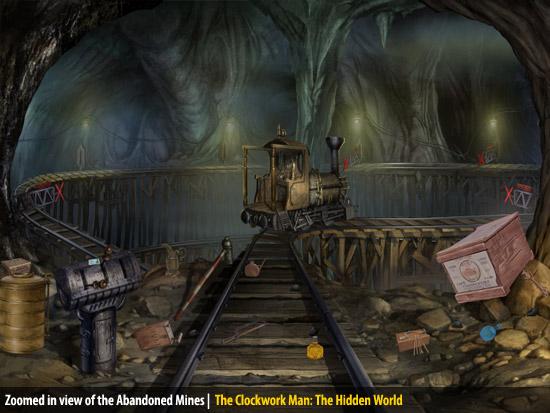
Whereas in “traditional” hidden object games you search for items on one screen, now you’d have two or more. That increases the scene complexity and offers more quality playtime, as players can now explore what in essence is a larger area.
Scrolling scenes are made up of images positioned at different depths. The players feel like they are actually moving around and inspecting an area. The movement can be horizontal or vertical. Scrolling scenes also add rich complexity to a location. Instead of looking for objects that are visible on the screen the whole time, you have to move around to find some of them. You see, front layers may be covering objects at one angle but not when looked at from another one.
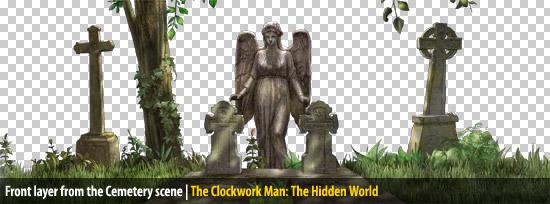
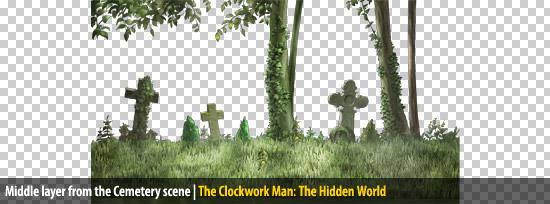
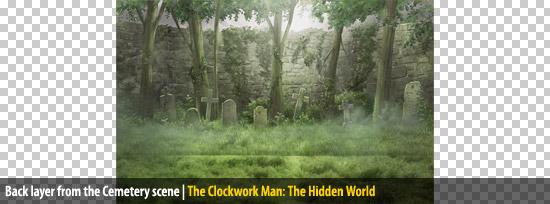
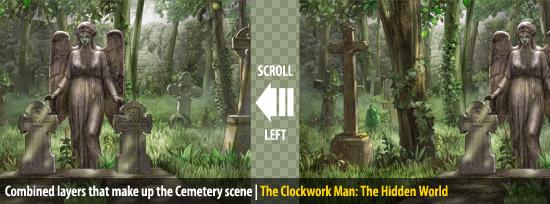
Zoomable and scrolling scenes are much more expensive to design and implement, because they require multiple graphics per scene. They usually cost thrice as much as a static one.
Both of these mechanics also required extensive prototyping as they had never been done before and we frankly had no clue if they would even be playable! We were actually told that our idea wouldn’t work at all, and we had better emulate what others were doing at the time. Luckily, we didn’t listen.
The visual style of The Clockwork Man
Apart from the unique gameplay mechanics, we wanted our game to stand out visually. We set out to discover a style that would be vibrant and immersive to the players.
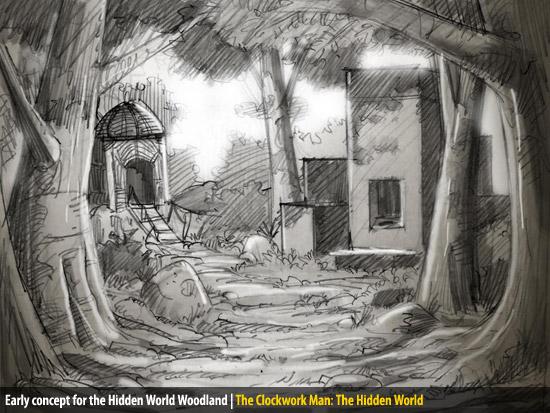
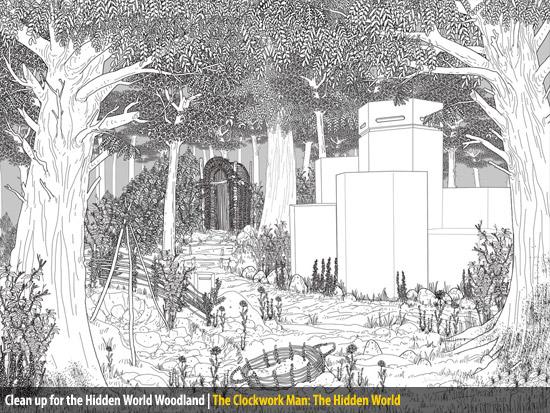
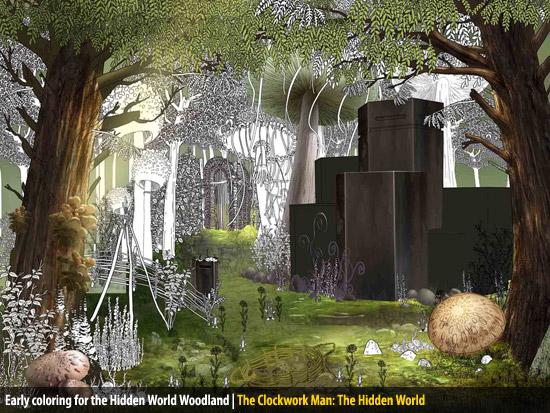
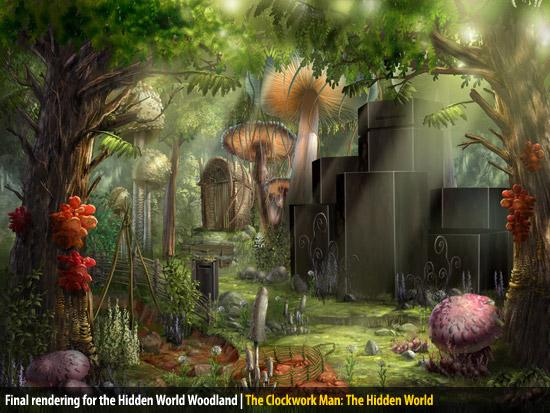
Zsolt and Peter, our background artists, turned our vision to reality, giving life to this enchanting world by drawing and painting everything by hand. Starting with rough sketches, to clean-ups and finally painting over line art, they created the world where our characters would live in. The naive, yet determined, Miranda and Sprocket, her adorable robotic friend, would soon be flying from London to South America to discover the truth about Miranda’s grandfather’s secret experiment.
After 13 months of hard work The Clockwork Man was released in March 2009. By that time we had gone over the game’s available budget from our publisher. However, we were elated to discover that not only did we gain a lot of loyal fans, but the players were thrilled with the new ways to find hidden objects. A scant week after the game was out, people were already asking for a sequel. We knew we had to go back to work!
The Clockwork Man: The Hidden World
No matter how hard you work on something, it will never be perfect. We gave our best for The Clockwork Man, yet, given more time and money, we could have gone further. Realistically though, at some point you just have to release the game.
As we begun work on the sequel, players’ reviews and comments started coming in. It’s important to go beyond praise, and see what people didn’t like much. Armed with that knowledge, we set out to make The Clockwork Man: The Hidden World a greater success than its predecessor.
We would keep everything that worked in the first game, even improve it, and fix/adjust/get rid of anything that players didn’t like. We had the same publisher money as for the first game, yet we wanted to make something grander.
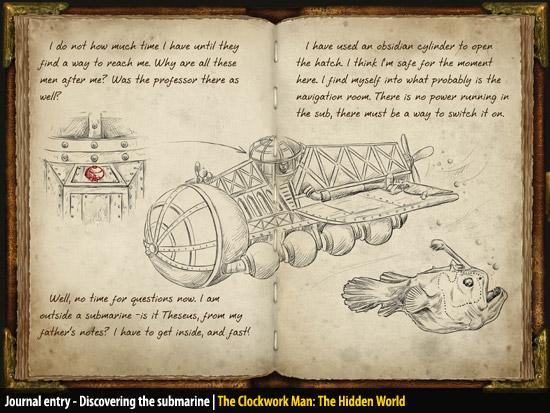
Listening to our players
Most people liked the first game’s story, but also felt that it ended abruptly. We wanted to ensure that everyone who followed the sequel’s story would be overly satisfied. One of the toughest challenges was to extend quality gameplay time and integrate it seamlessly with a rich storyline.
Everyone loved the graphics of the first game. They were definitely one of the production’s best assets. For the sequel, we created even more vibrant scenes spread over varied viewpoints and added animations. We filled them with era-consistent objects, each of which required an hour, on average, to make. Athina and George, our illustrators, hand-painted over 700 of those objects.
The novelty of the scrolling and zoomable scenes was brought back for the sequel. We multiplied the number of scrolling scenes – even introduced a vertical one, inside a treehouse, which seemed like a great place for us to do so.
Sprocket
Everyone seems to adore Sprocket, although he never utters a word of English during the games! Instead, he speaks in robo-tongue and only Miranda understands him. Often opinionated, and sometimes mischievous, he is a loyal friend, and in the sequel we gain insight as to how strong their friendship is. Sprocket was our take on the boring ‘hint’ button. Each of his gadgets is tailored specifically for him and the gameplay. We went through numerous design iterations to make them work contextually.
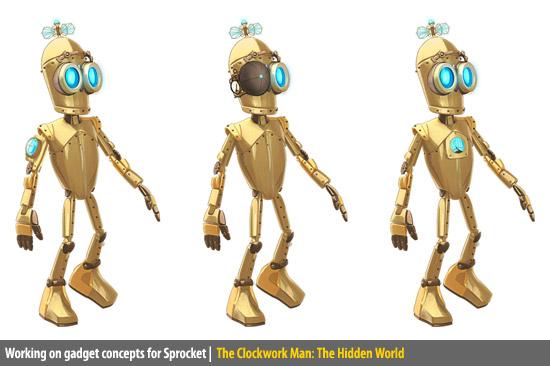
The Hidden World
Designing The Hidden World was another huge challenge. It had to be a land that would instantly amaze the players; it had to blend a primitive world with a birthplace of technology. Above all, gameplay had to make sense. This proved to be the most daunting task, since the last 2 game chapters take place there. We can’t say much as it would spoil the fun, but we were influenced by wildly different things like: Easter Island, Eden Project, pahoehoe, and the movie “Metropolis”. We hope that we have managed to pull it off well!
Puzzles, Cutscenes and Music
A lot of players asked for more puzzles and we listened. For the sequel we created 14 original puzzles. They were the most costly features of the game. Each puzzle relates to the story and location; they are different from the usual staple of brain-benders. The majority of them were designed from scratch. We pride ourselves for having created these unique experiences that tie to the overall story arc.
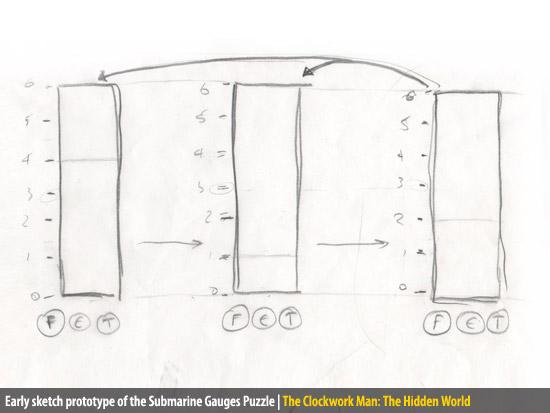
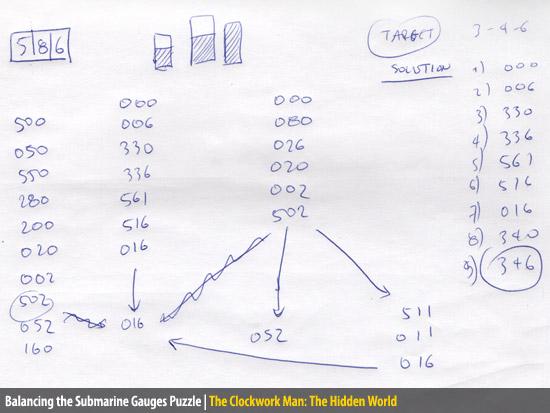
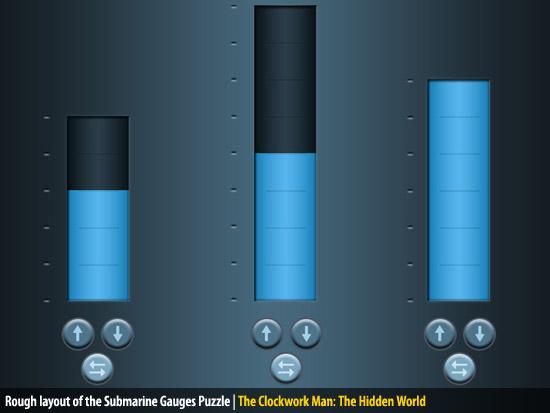
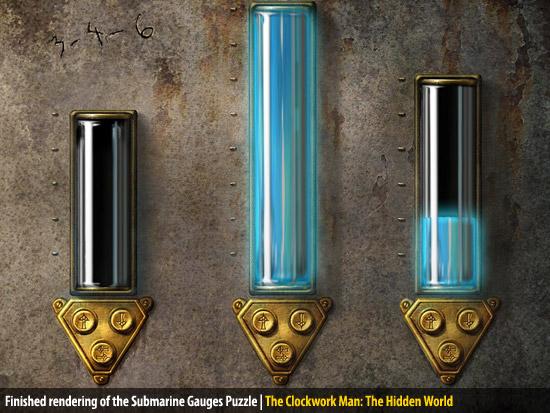
The puzzles cannot be skipped. To us, it does not make sense to create a game where you can just skip parts of it. It makes sense, however, to have a robust hint system. We programmed progressive, detailed hints available from Sprocket- so detailed that for some puzzles Sprocket shows how they can be solved. Along with the puzzles, the sequel has many more interactive or, as we call them, adventure, moments.
We also wanted to give the game a cinematic feel. At first, we toyed with static, single-screen, black and white cutscenes. In the end, we went for something more exciting. We created animated cutscenes, with tailor-made music and voice-overs.
Music, in an atmospheric game, can really boost the player’s experience, so we asked the music composers to give us their best. In the end, one can enjoy a beautiful soundtrack of over 40 minutes of original music that can also stand on its own. We’re very proud of the outcome.
The DRM-free approach
After 14 months of production, having spent more (again) than the available budget and ending up paying from our pockets, The Clockwork Man: The Hidden World was released mid-July 2010. As a special treat to those who chose to purchase directly from us, we decided to offer the game DRM-free. This means no serial numbers, managers or other pesky things. Also, the price would include Windows and Mac versions, plus our companion Guide.
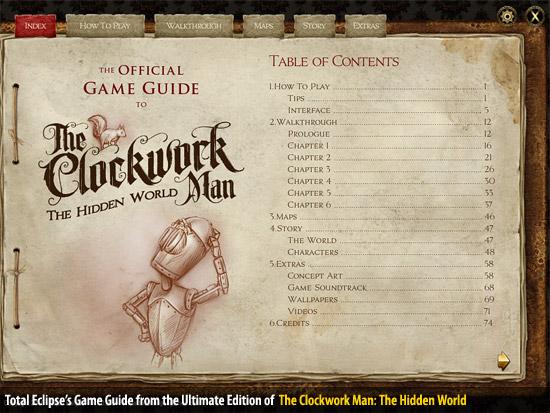
People really appreciate the ability to play their owned games without DRM and on their platform of choice. We believe this to be again a first for the casual scene. After the Clockwork Man series, we are now making all our games DRM-free.
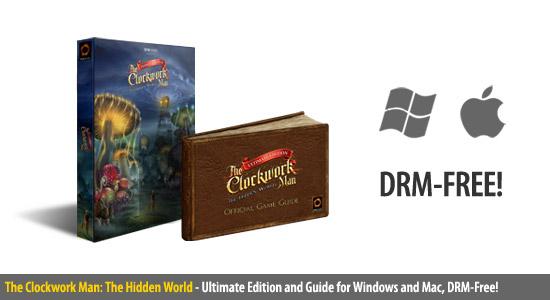
We hope that you will appreciate the hard work that has gone into the development of The Clockwork Man series and most of all that you will have tons of fun playing the games!
More articles...
Monopoly GO! Free Rolls – Links For Free Dice
By Glen Fox
Wondering how to get Monopoly GO! free rolls? Well, you’ve come to the right place. In this guide, we provide you with a bunch of tips and tricks to get some free rolls for the hit new mobile game. We’ll …Best Roblox Horror Games to Play Right Now – Updated Weekly
By Adele Wilson
Our Best Roblox Horror Games guide features the scariest and most creative experiences to play right now on the platform!The BEST Roblox Games of The Week – Games You Need To Play!
By Sho Roberts
Our feature shares our pick for the Best Roblox Games of the week! With our feature, we guarantee you'll find something new to play!All Grades in Type Soul – Each Race Explained
By Adele Wilson
Our All Grades in Type Soul guide lists every grade in the game for all races, including how to increase your grade quickly!







